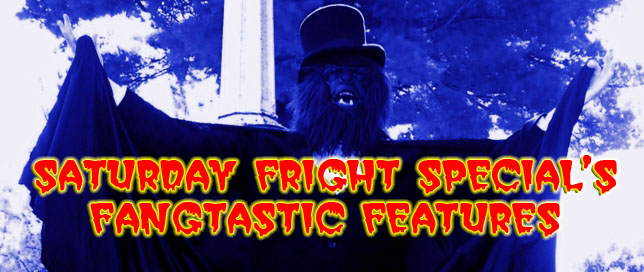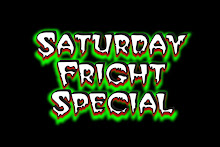
Written by Mark Nelson
It's 1981. I'm 7 years old, and take a look at my hometown newspaper after school one day. On the front page is a picture of Andy Kaufman wrestling a woman in the lobby of my local three-screen movie theater. HUH? What was the funny guy from TAXI doing in my small NH town? According to the accompanying article, he'd gone to see SUPERMAN II there, and decided upon an impromptu wrestling match in the theater's lobby afterward. I was ticked off when I read this, as I'd had my father take me to see SUPERMAN II there the night before Kaufman showed up. If I'd waited a day, I could've seen (maybe even MET) Andy Kaufman. It's something I've always remembered, as Kauf's appearance in my tiny, out-of-the-way town has always mystified me.
Cut to a decade or so later, and I come across I'M FROM HOLLYWOOD on Comedy Central. Suddenly the bizarre woman-wrestling incident at my hometown theater so many years earlier made sense. This documentary revealed Andy Kaufman: Comedian to also be Andy Kaufman: Wrestling Heel. I watched I'M FROM HOLLYWOOD whenever it showed up on Comedy Central, which for a while was often. I just couldn't get enough of Kaufman's villain put-on being taken so seriously by the wrestling fans of Memphis, Tennessee. Like so much of Kaufman's living satire, his actions seemed pretty genuine to the casual or unsuspecting observer. For those in the know, however, Kaufman's put-ons were hilarious in their deadpan devotion to his deep-cover prankery.
I'M FROM HOLLYWOOD presents the full saga of Andy Kaufman's numerous early-80s run-ins with Memphis wrestler Jerry "The King" Lawler, both in the ring and on local TV programs (this saga is perhaps best known for the LATE NIGHT WITH DAVID LETTERMAN appearance by the dueling duo, in which a fight broke out on-air). Interspersed throughout the verbal and physical smack-downs are interviews with Kaufman's friends and colleagues (including Marilu Henner and Robin Williams) conducted after his death, giving their memories of this strange period of is career in mock bewilderment. That they were willing to posthumously continue the joke Kaufman had started years earlier is a testament to their friendship and sense of humor.
I'M FROM HOLLYWOOD was co-directed by Lynne Margulies (aka Lynnie Legend), Kaufman's girlfriend during the later part of his life. She provides a video introduction the piece, and is joined by Kaufman partner-in-crime Bob Zmuda for a funny and fascinating audio commentary, which continues over footage of full matches between Kaufman and Lawler, viewable separately from the film as bonus features. The commentary is a surprisingly candid recounting of the whole wrestling period of Kaufman's career. This is one of the few times I've heard Kaufman insiders publicly expose the mechanics behind his madness.
The only beef I have with the otherwise-wonderful disc is that at times the video is marred by a stuttered-motion effect when people are moving horizontally across the screen. I've confirmed with Legend House that this was an authoring error on the initial run of the disc, and that future pressings will be corrected. This was a bit distracting at times, but I was honestly so happy to have this that I was able to over look the anomaly for the most part.
I'M FROM HOLLYWOOD is highly recommended for fans of Andy Kaufman, performance art, absurdist and anarchic comedy, rabble rousing, pro wrestling, and name-calling. You know who you are.
www.legendhouse.net











